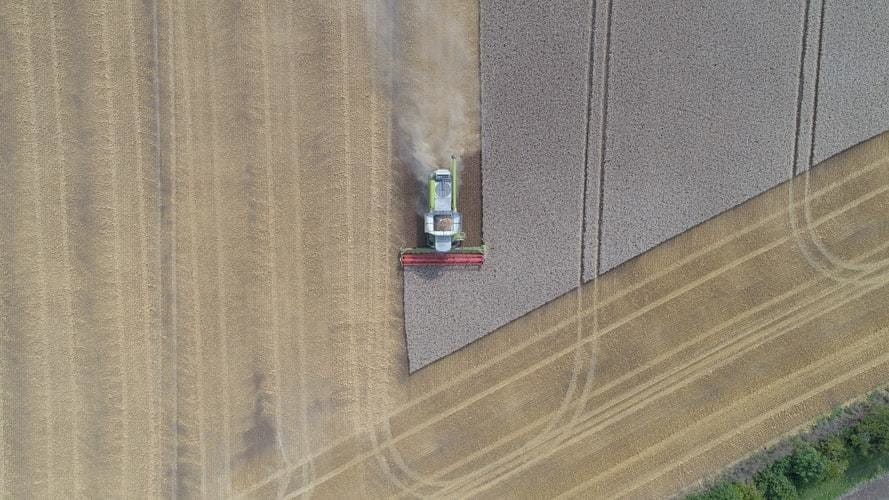Farming emissions are threatening the Paris Agreement. Here’s why

Poorer countries in Latin America, Southeast Asia, and sub-Saharan Africa have experienced the most pronounced surge in these “land-use change” emissions. Image: Unsplash/Shaun Coward

Get involved with our crowdsourced digital platform to deliver impact at scale
Stay up to date:
SDG 13: Climate Action
- Researchers have studied land-use contributions to carbon dioxide and other greenhouse gases from 1961 to 2017.
- Europe has the lowest land-use emissions, at 0.5 tons per person per year.
- But the figure is substantially higher almost everywhere else.
- As the planet’s population continues to increase, farmers and policymakers will need to meet and exceed current best practices.
Without substantial changes in farming practices, rising emissions from human land-use will jeopardize the goals of the Paris climate agreement, a new study shows.
Realigning the United States with the accord was one of President Joe Biden’s first post-inauguration acts.
In a paper in Nature, researchers presented the most thorough inventory yet of land-use contributions to carbon dioxide and other greenhouse gases (including nitrous oxide and methane) from 1961 to 2017, taking into account emissions from agricultural production activities and modifications to the natural landscape.
“We estimated and attributed global land-use emissions among 229 countries and areas and 169 agricultural products,” says lead author Chaopeng Hong, a postdoctoral scholar in earth system science at the University of California, Irvine.
“We looked into the processes responsible for higher or lower emissions and paid particularly close attention to trends in net CO2 emitted from changes in land use, such as converting forested land into farm acreage.”
'Intensity' of farming emissions
The researchers learned that poorer countries in Latin America, Southeast Asia, and sub-Saharan Africa experienced the most pronounced surge in these “land-use change” emissions.
East Asia, South Asia, and the Middle East produced fewer greenhouse gases as a result of land-use change, according to the study, but the regions’ agricultural emissions grew strongly as output raced to keep up with population expansion. More affluent North America, Europe, and Oceania showed negative land-use change emissions but nonetheless substantial farm-originated pollution.
“While the situation in low-income countries is critical, mitigation opportunities in these places are large and clear,” says senior author Steve Davis, associate professor of earth system science. “Improving yields on already cultivated land can avoid clearing more carbon-dense forests for cultivation of soybeans, rice, maize, and palm oil, thereby drastically reducing land-use emissions in these countries.”
The authors suggest that nations in emerging and developed markets also can lessen the emissions intensity of agriculture by adopting more efficient tilling and harvesting methods, by better soil and livestock waste management, and by reducing food waste.
In addition, dietary changes could help, according to the study, which says that while red meat supplies only about 1% of calories produced globally, it’s responsible for up to a quarter of the world’s land-use greenhouse gas emissions.
Europe has the lowest land-use emissions, at 0.5 tons per person per year, the researchers note, but the figure is substantially higher almost everywhere else, and as the planet’s population continues to increase, farmers and policymakers will need to meet and exceed current best practices.
Looking ahead
The paper highlights some promising technological solutions, such as new ways of cultivating rice that create less methane and dietary supplements for cattle that reduce their harmful emissions by up to 95%.
“Feeding the planet may always generate substantial greenhouse gas emissions,” says Davis, a member of the executive board of the University of California, Irvine’s Solutions that Scale initiative which seeks answers to the planet’s most pressing climate and environmental problems.
“Even if we get emissions down to European levels worldwide, with expected population growth, we could still be looking at more than 5 gigatons of land-use emissions per year in 2100, an amount at odds with ambitious international climate goals unless offset by negative emissions.”
Additional coauthors are from Stanford University; the University of California, San Diego; Colorado State University; and the Max Planck Institute for Meteorology in Germany. The National Science Foundation, the German Research Foundation, and the Gordon and Betty Moore Foundation funded the work.
Don't miss any update on this topic
Create a free account and access your personalized content collection with our latest publications and analyses.
License and Republishing
World Economic Forum articles may be republished in accordance with the Creative Commons Attribution-NonCommercial-NoDerivatives 4.0 International Public License, and in accordance with our Terms of Use.
The views expressed in this article are those of the author alone and not the World Economic Forum.
Related topics:
The Agenda Weekly
A weekly update of the most important issues driving the global agenda
You can unsubscribe at any time using the link in our emails. For more details, review our privacy policy.
More on Industries in DepthSee all
Robin Pomeroy
April 25, 2024
Daniel Boero Vargas and Mandy Chan
April 25, 2024
Abhay Pareek and Drishti Kumar
April 23, 2024
Charlotte Edmond
April 11, 2024
Victoria Masterson
April 5, 2024
Douglas Broom
April 3, 2024







